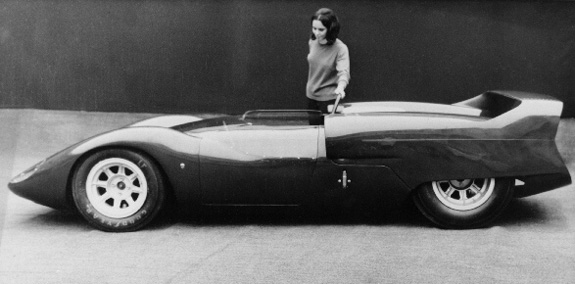The DeTomaso Pantera is the Studebaker Avanti of European automotive industry. Both cars have suffered under constant reboots, new ownership groups, and facelifts, each one with greater fanfare and less funding than the previous. Both cars survived on life support so long that they outlived the generation of customer that both recognized the brand and responded to the design.
This is unfortunate in both cases as the DeTomaso and Avanti are both iconic cars for the time period they were born into, and should have stayed within. My memory of the beautiful, clean lines of the original Pantera are clouded with the winged and vented oddity of the 1980’s.
I was deeply concerned of this history when I heard the news that there was yet another relaunch of the DeTomaso brand coming at the Goodwood Festival of Speed (FOS) this year. One more sad attempt at recapturing lightning in a bottle, nearly 4 decades after the thunderstorm.
However, the car launched at Goodwood was amazing and completely unexpected. Based on the DeTomaso P70, the new P72 is an utterly gorgeous machine. The smooth and swooping lines have more Alfa Romeo Stradale than folded paper Pantera. Most interesting is the choice of a manual transmission. Clearly not a decision designed to reach a price point, but rather one made to intentionally to enhance the driving experience, something forgotten in the world of Nurburgring lap times and 0-60 comparisons.

The P70 is an odd choice when compared to the jewel like Vallelunga, the flawed but stunning Mangusta, or the famous Pantera. The P70 was an ill-fated American/Italian projects led by Carroll Shelby and Alejandro DeTomaso, two men both known for the undying faith in their own opinions. The P70 was an open cockpit road race car designed to take on the United States Road Racing Championship or USRRC. The USRRC was the predecessor to the Can-Am series and, at the time the fields were filled with Lolas and early McLarens.
The development process was about as successful as one would imagine. DeTomaso argued with Shelby about how big you can bore out a 289 Cobra engine and Shelby sent his designer, Peter Brock to Italy to oversee styling. The result was one P70 completed, with the other planned 49 cars never seeing the light of day. The lone P70’s racing career was terribly unsuccessful, with most reports suggesting it started only one race and retired on the first lap.
The P70’s lackluster history is a curious choice for the relaunch of the DeTomaso brand, but based on the car shown at Goodwood, it was clearly the right decision.
The new P72 isn’t as much rewarmed DeTomaso leftovers as it is an homage to traditional Italian coachbuilding. Pagani may have been first in the modern era, but the P72 revives everything great about the 1950’s and 1960’s era of Italian car design. The P72 looks like it was shaped by a human and not just wind tunnel data. The car projects emotion, just like a bespoke Italian car should.
I’ve heard the criticism, but I dismiss it quickly. Sure it’s a car for billionaires and I’ll probably never see one and certainly never drive one. Exactly how is that different than most of the exotic machines produced today?
Perhaps the most interesting comment comes from the Glickenhaus group, whose one-off Ferraris P3/4 and P4/5 are clearly a base inspiration for the P72. They claimed the P72 is a cartoonish “Vegas showgirl” copy of their car. Curiously, the two Glickenhaus one-off Ferraris borrow heavily from the original Ferrari P3 and P4 cars. Given the chosen names for his cars, I’d say their design inspiration is poorly hidden.
I was skeptical of the DeTomaso announcement at Goodwood, but it’s the most interesting design I’ve seen in recent memory. The choice of a P70 successor over a Pantera is inspired. That decision, combined with traditional Italian design and a manual transmission signals a philosophy of respect for both tradition and the driver.
What a beautiful machine. We need more daring designs like the P72 to capture our imagination and emotions, and not always focus on just the numbers.
